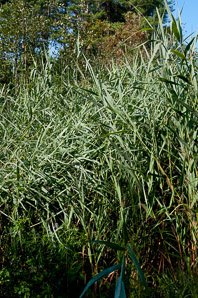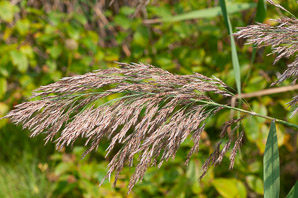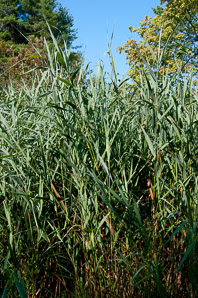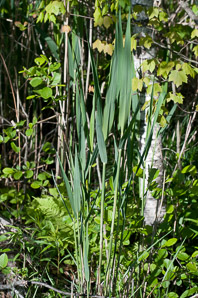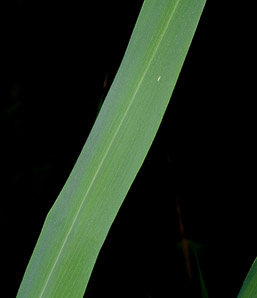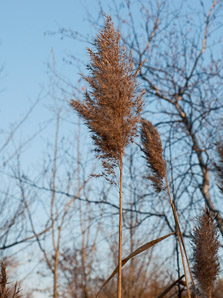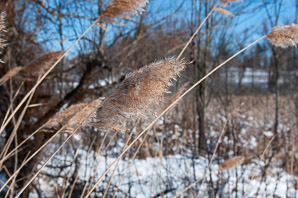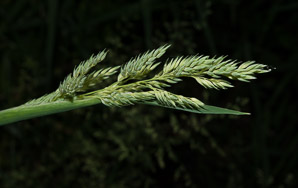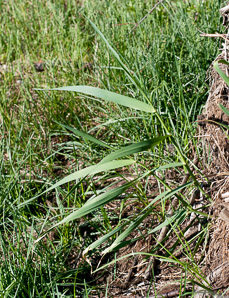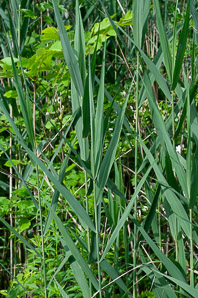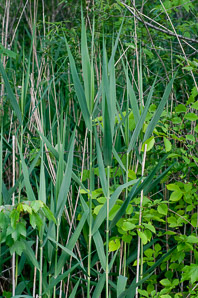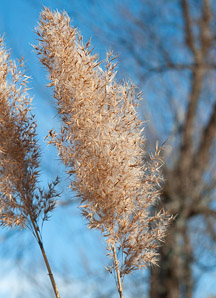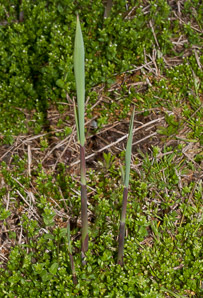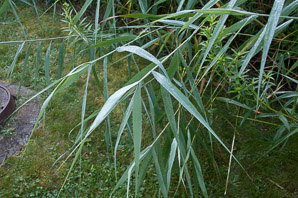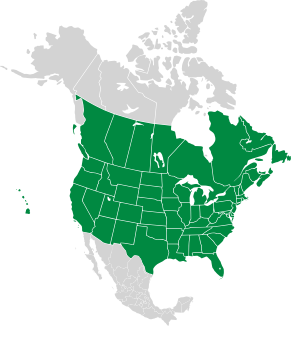Phragmites australis (Cav.) Trin. ex Steud.
Phragmites, common reed
Kingdom Plantae Plants, but not fungi, lichens, or algae
Subkingdom Tracheobionta Vascular plants—plants with a “circulatory system” for delivering water and nutrients
Division Magnoliophyta Flowering plants, also known as angiosperms
Class Liliopsida Monocots (plants with a single seed leaf); includes the lily family
Subclass Commelinidae Dayflowers and spiderworts, and several others
Order Cyperales Flowering plants including grasses
Family Poaceae Grasses (but not sedges or rushes)
Genus Phragmites From the Greek phragma , “a fence or screen, hedge,” hence growing in hedges
Species australis Southern
About plant names...
The common reed is found in wetlands through much of North America and the rest of
the world. It is found throughout the conterminous United States. It is considered invasive (or otherwise undesirable) in many states along the Atlantic coast,
as well as much of the midwest and parts of the Pacific northwest.
Identification: Phragmites looks like (and is) a giant grass,
with blades up to 1½′ (50 cm) long. It can grow as high as 20′ (6.1 m), occurring in dense stands (up to 20 stems
per square foot) and
spreading very quickly. Flowers are dark purple, growing in dense spikes up to 2′ (60 cm) long.
It is found near fresh and brackish water, and may grow in standing water or even as free-floating
mats.
Online References:
Wikipedia
The USDA Plants Database
The Virginia Tech Weed Identification Guide
Plants for a Future, a resource and information centre for edible and otherwise useful plants
Hort.purdue.edu
The USDA Forest Service's Fire Effects Information Database
The Commonwealth of Massachusetts Department of Conservation and Recreation (PDF)
References:
Agricultural Research Service of the United States Department of Agriculture, Common Weeds of the United States , Dover Publications, Inc., 1971
Uva, Richard H.; Neal, Joseph C.; DiTomaso, Joseph M., Weeds of the Northeast , Comstock Publishing Associates, 1997 , p. 76
8/1/2009 · Falmouth, Maine
9/14/2011 · Nashua River Rail Trail, Groton Center, Groton, Massachusetts · ≈ 14 × 9″ (35 × 23 cm)
8/1/2009 · Falmouth, Maine
5/13/2010 · Nashua River Rail Trail, Groton Center, Groton, Massachusetts
6/1/2010 · Nashua River Rail Trail, Groton Center, Groton, Massachusetts · ≈ 5 × 8″ (13 × 19 cm)
11/7/2009 · Nashua River Rail Trail, Groton Center, Groton, Massachusetts · ≈ 1 × 2′ (41 × 62 cm)
Older scientific or horticultural names
Phragmites australis (Cav.) Trin. ex Steud. var. berlandieri (Fourn.) C.F. Reed
Phragmites communis Trin.
Phragmites communis Trin. ssp. berlandieri (Fourn.) Á. Löve & D. Löve
Phragmites communis Trin. var. berlandieri (Fourn.) Fernald
Phragmites phragmites (L.) Karst., nom. inval.
Phragmites australis description by Thomas H. Kent, last updated 25 May 2020.
© FloraFinder.org. All rights reserved.
1/6/2010 · Nashua River Rail Trail, Groton Center, Groton, Massachusetts · ≈ 1½ × 1′ (45 × 30 cm)
6/5/2013 · Nashua River Rail Trail, Groton Center, Groton, Massachusetts · ≈ 7 × 4½″ (18 × 12 cm)
5/13/2010 · Nashua River Rail Trail, Groton Center, Groton, Massachusetts · ≈ 1 × 2′ (41 × 62 cm)
6/16/2010 · Nashua River Rail Trail, Groton Center, Groton, Massachusetts
6/1/2010 · Nashua River Rail Trail, Groton Center, Groton, Massachusetts
12/13/2011 · Nashua River Rail Trail, Groton Center, Groton, Massachusetts · ≈ 9 × 14″ (23 × 35 cm)
4/12/2011 · ≈ 15 × 10″ (39 × 26 cm)
8/1/2009 · Falmouth, Maine · ≈ 4 × 2½′ (120 × 80 cm)
10/27/2006 · Edgartown, Massachusetts · By Philip A. Despo
Range:
About this map...

